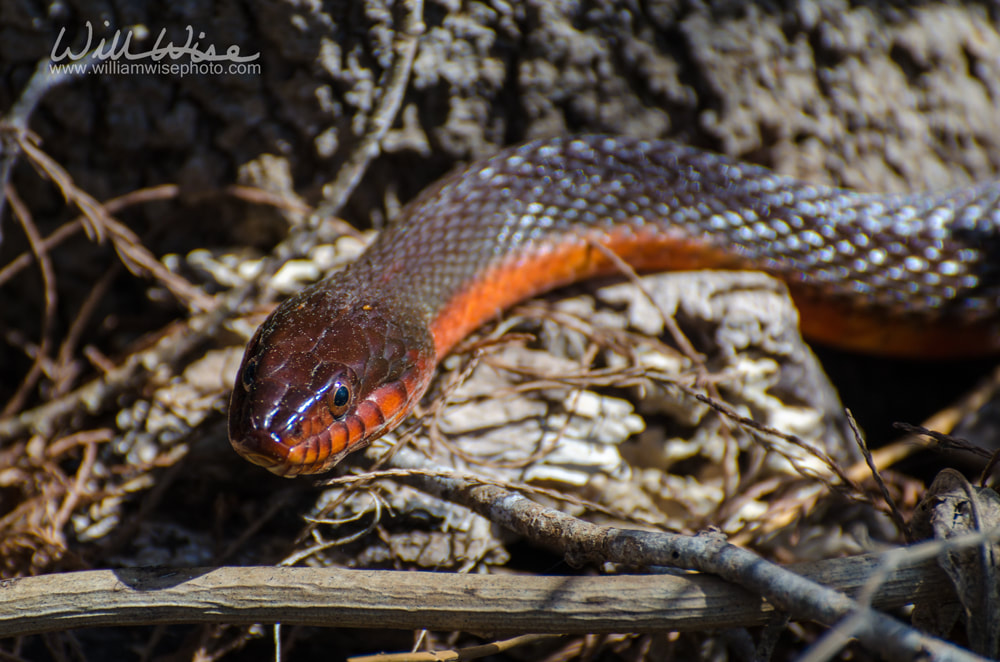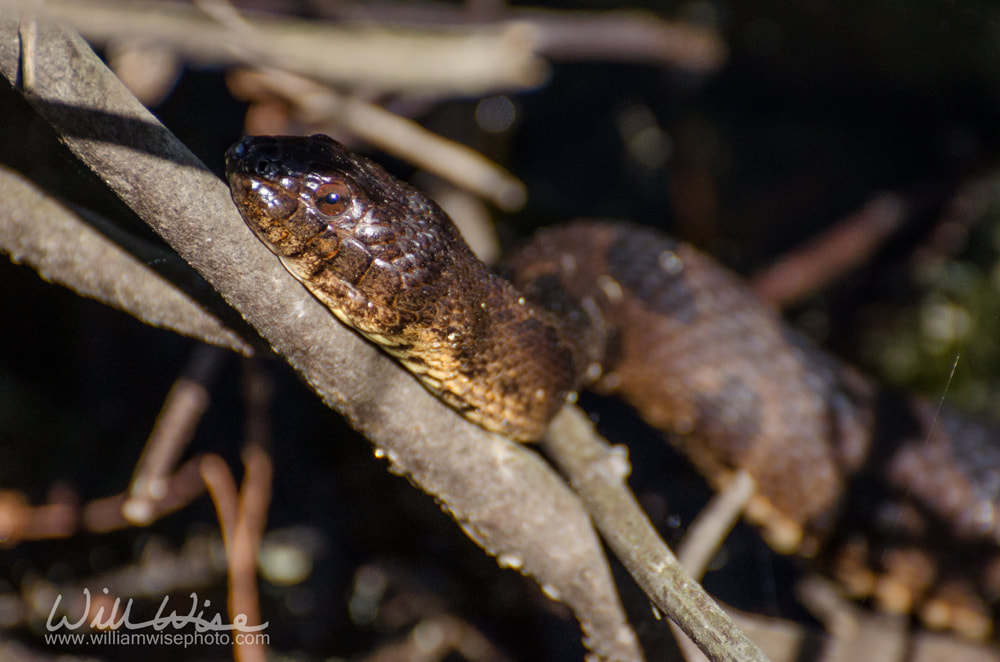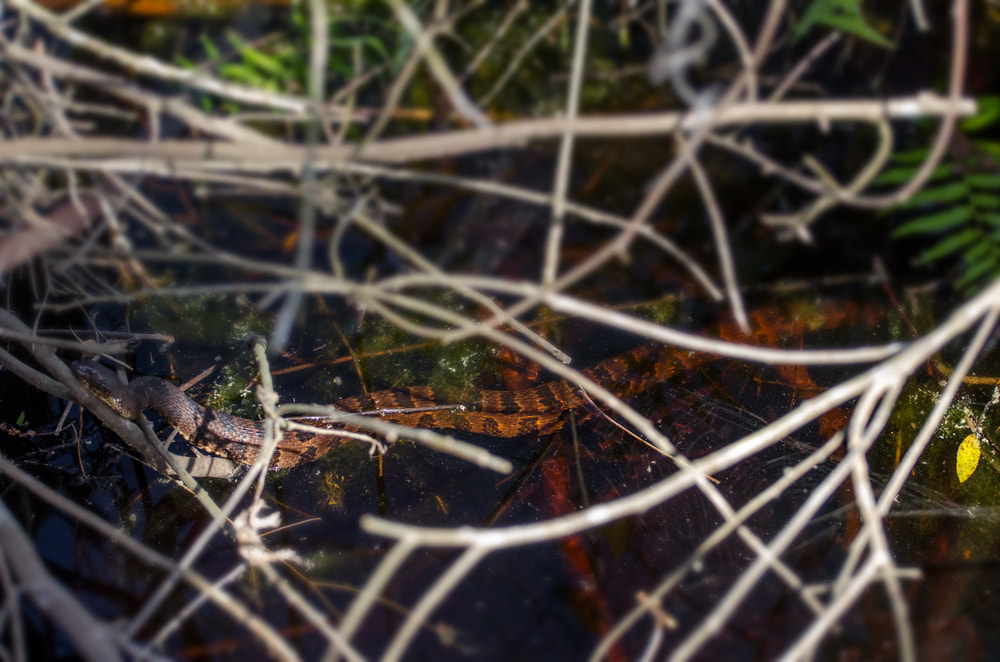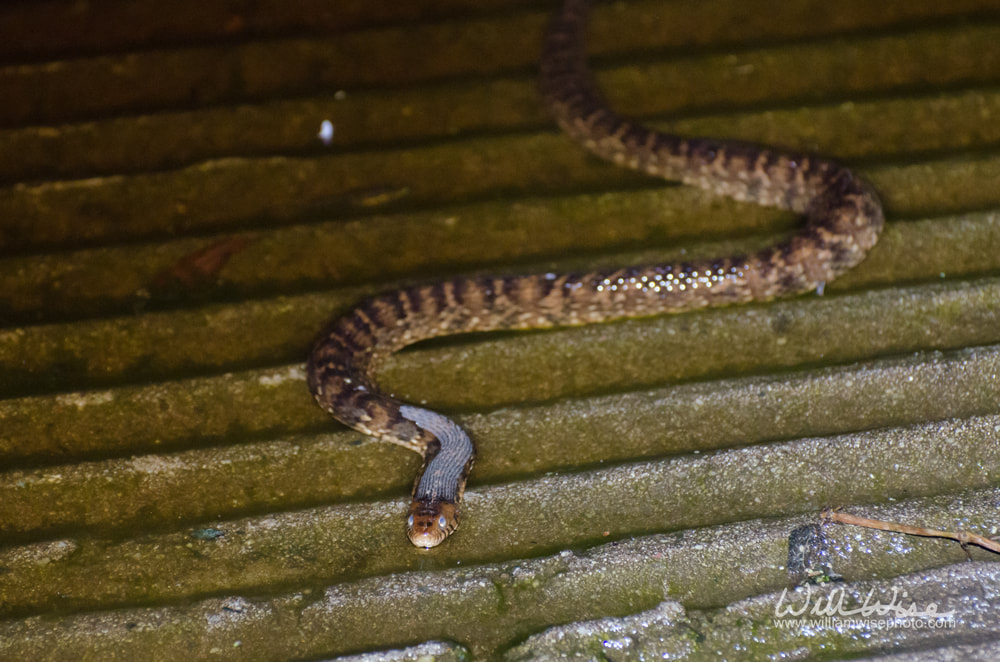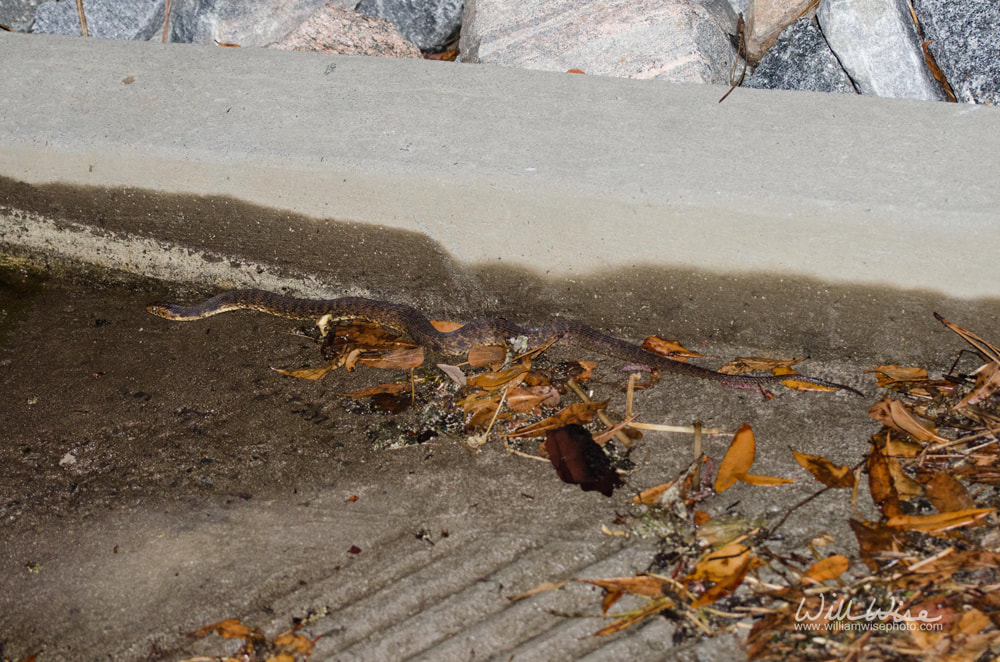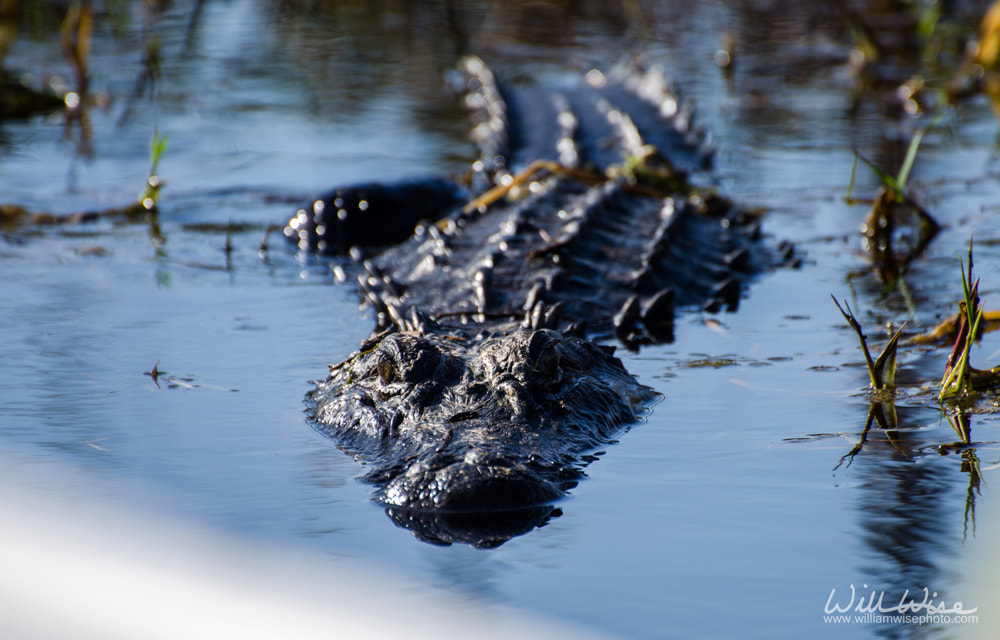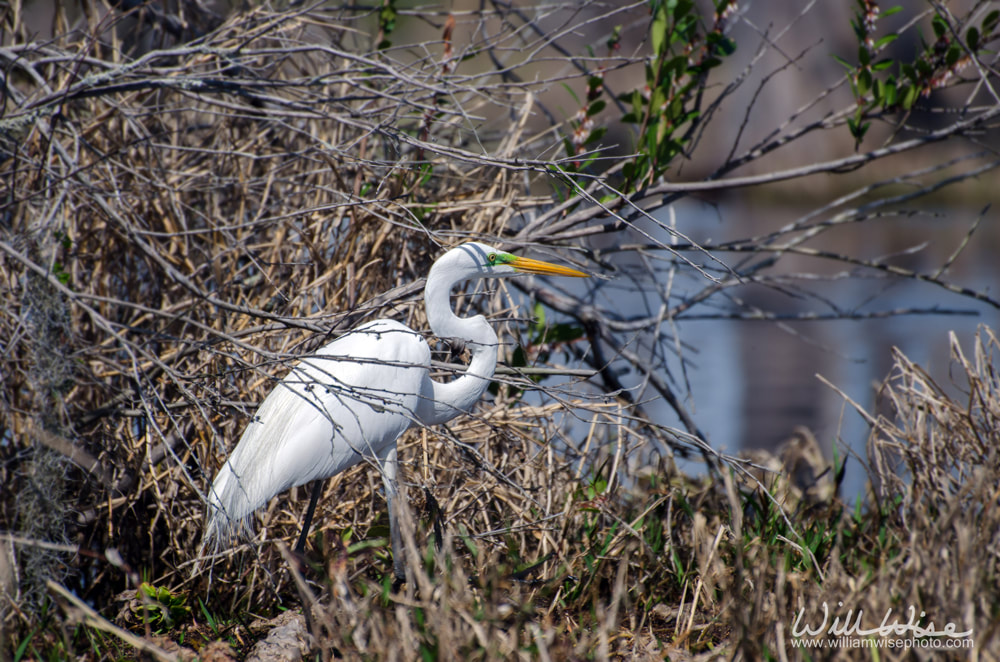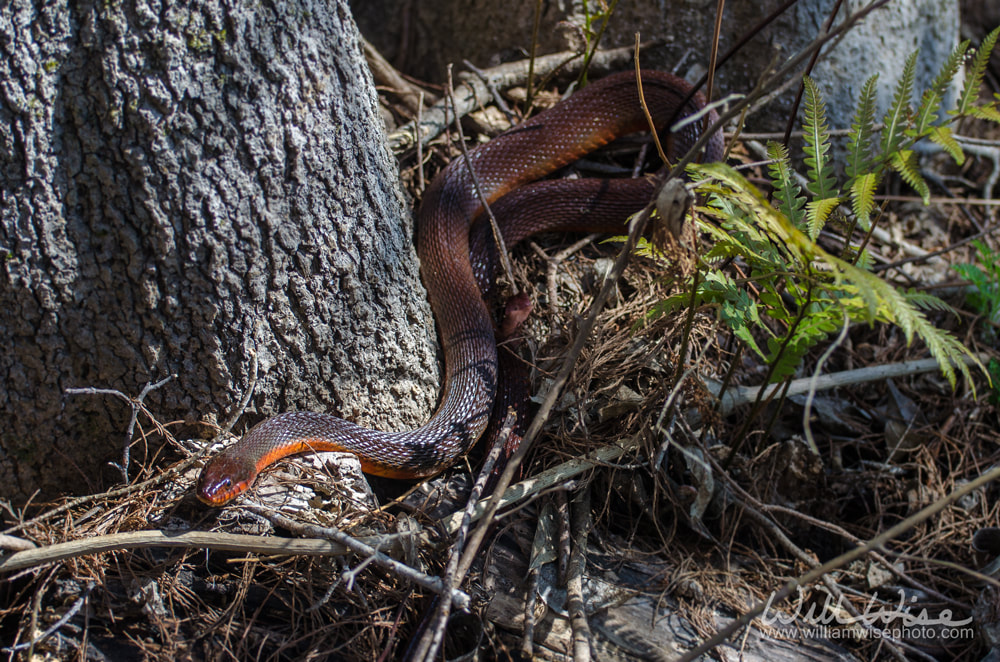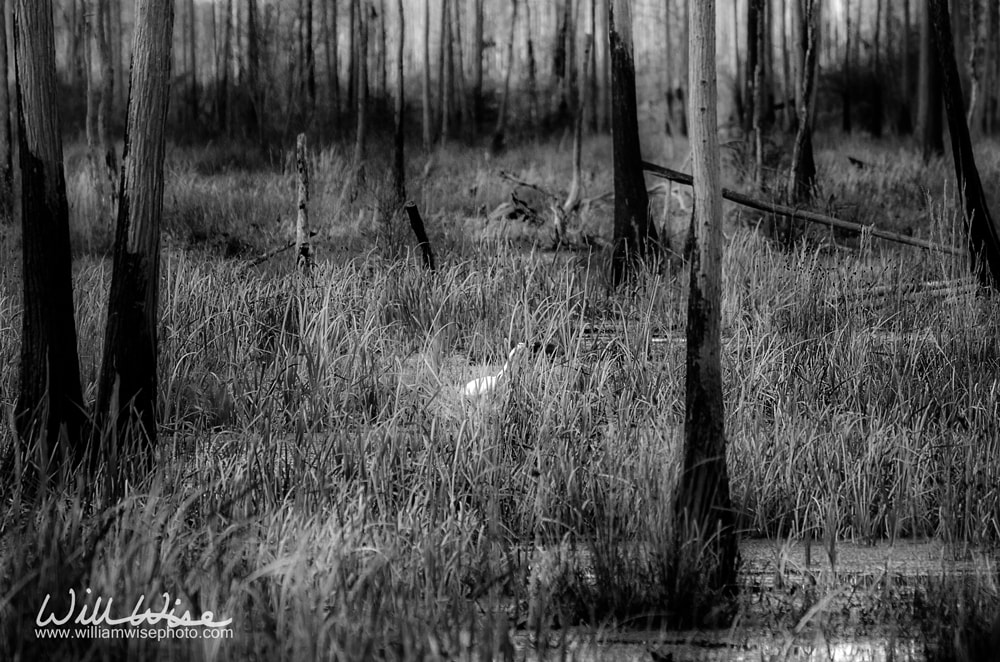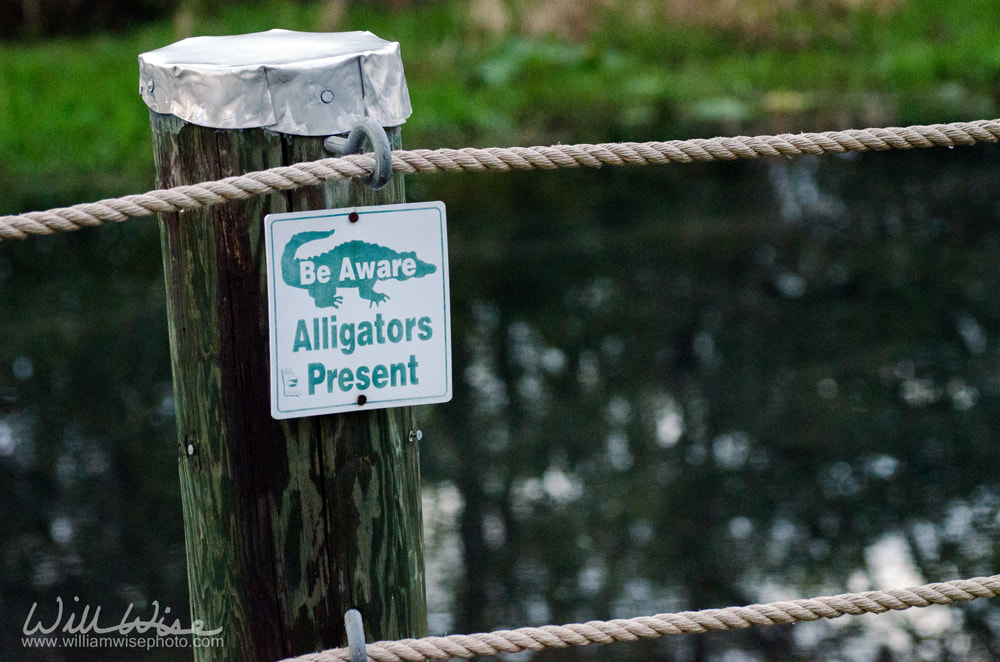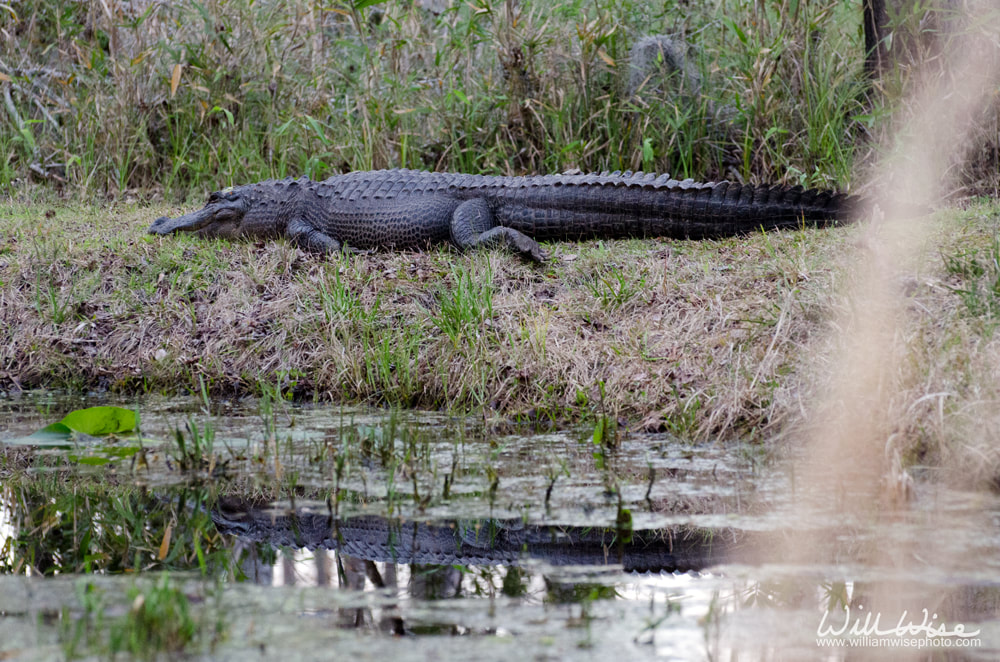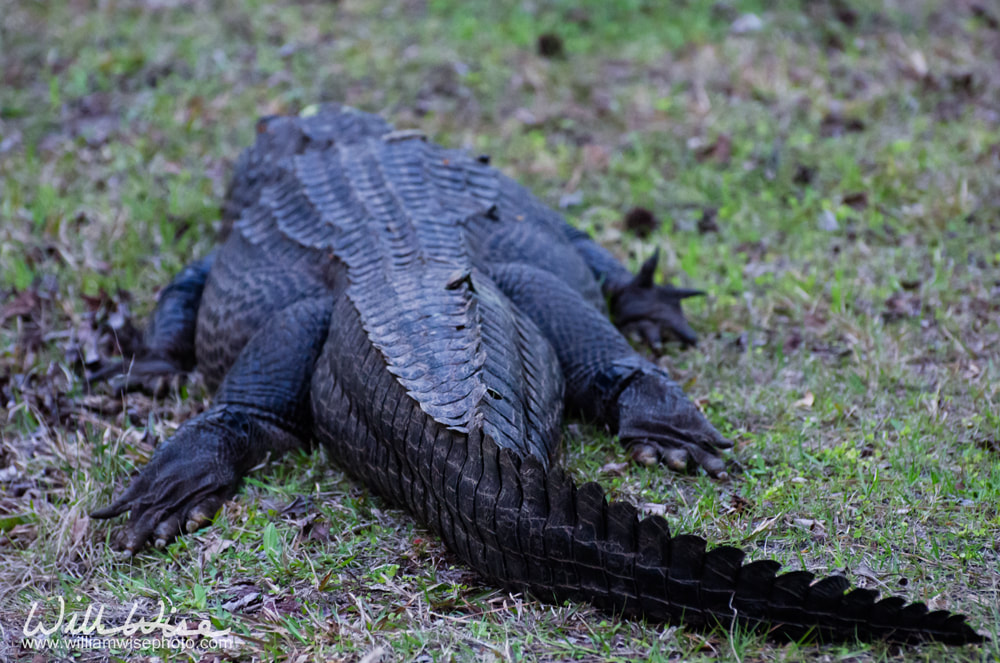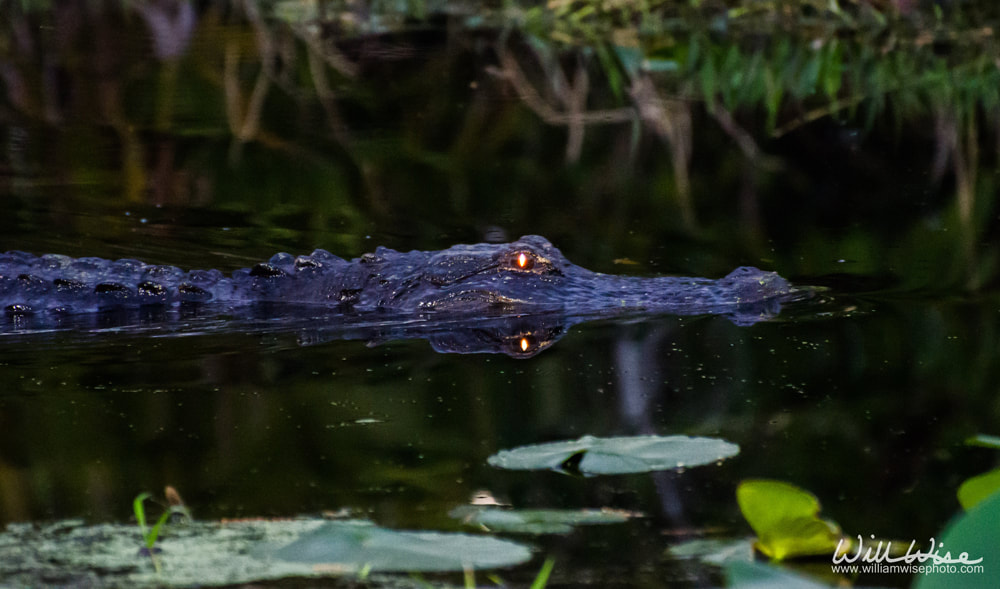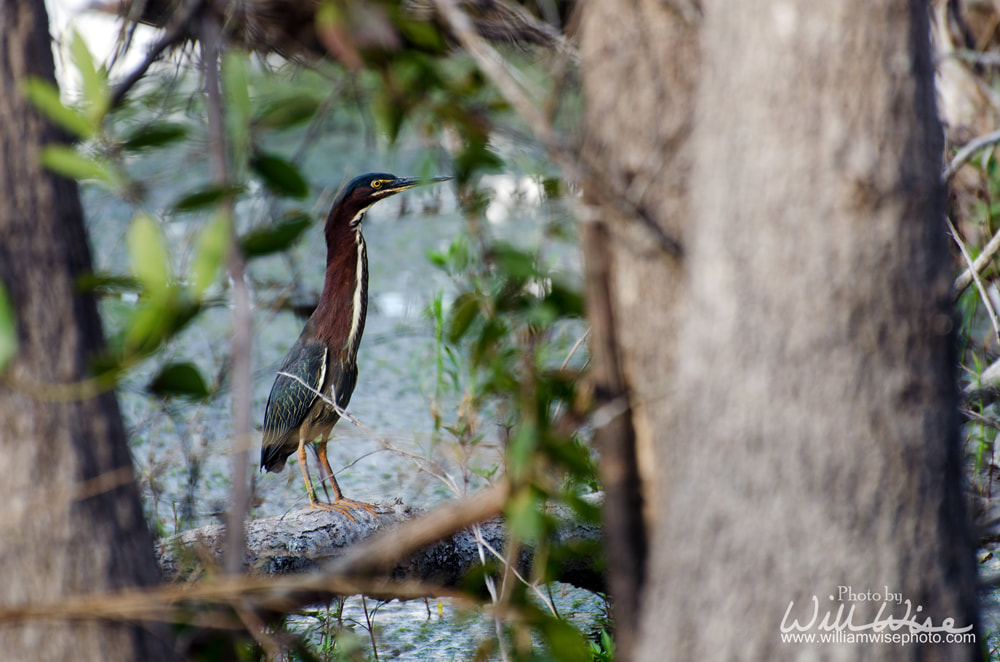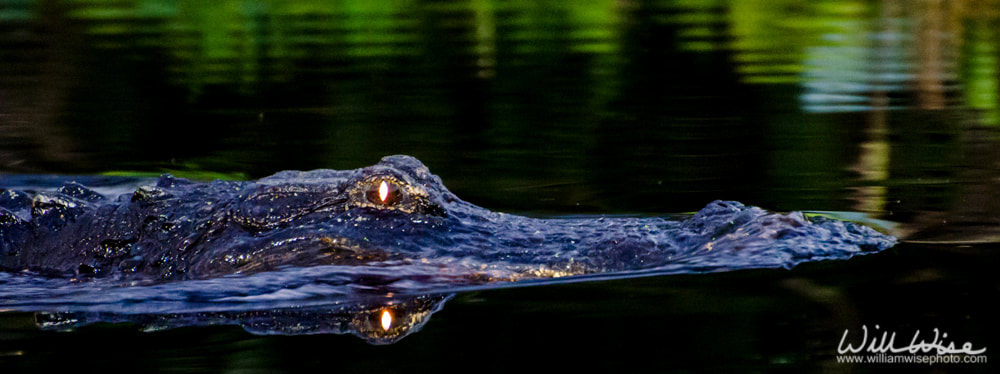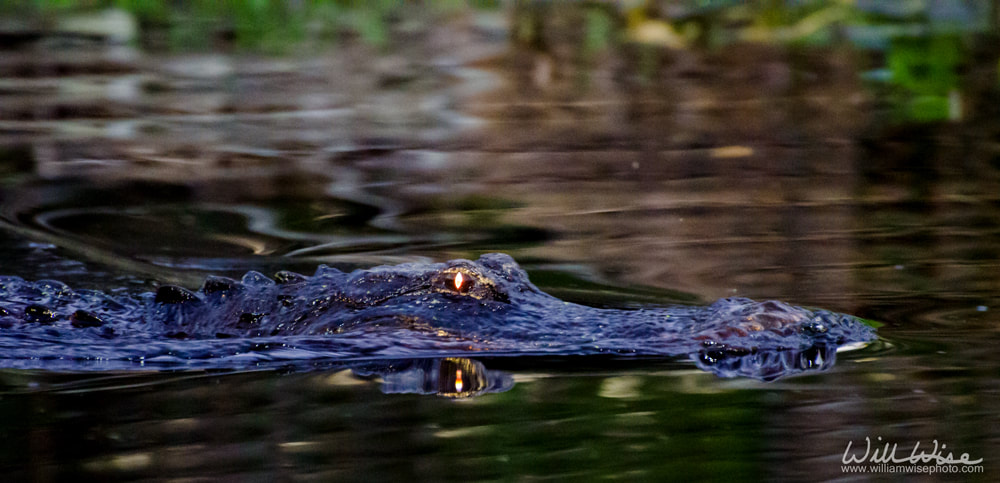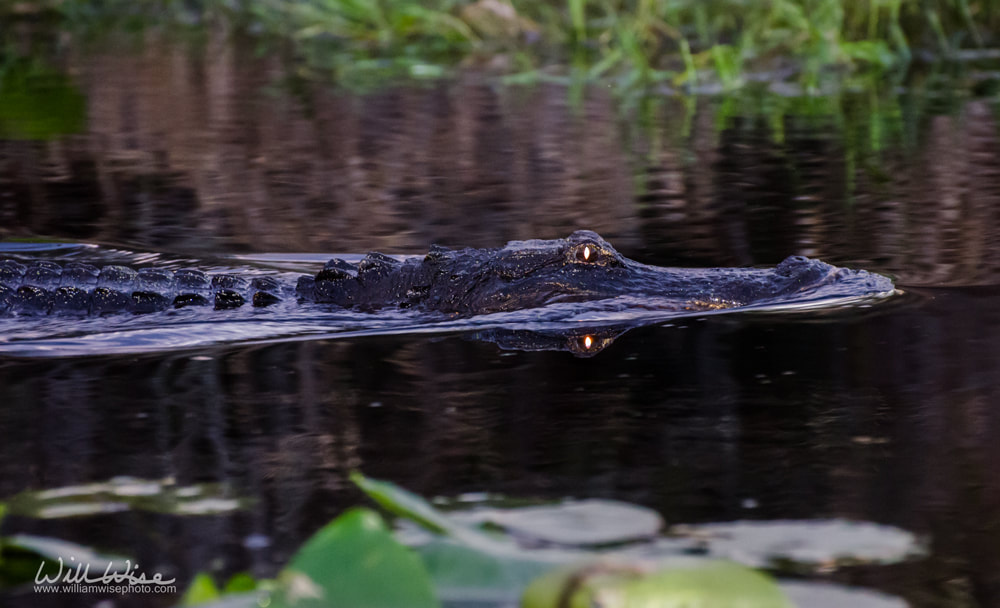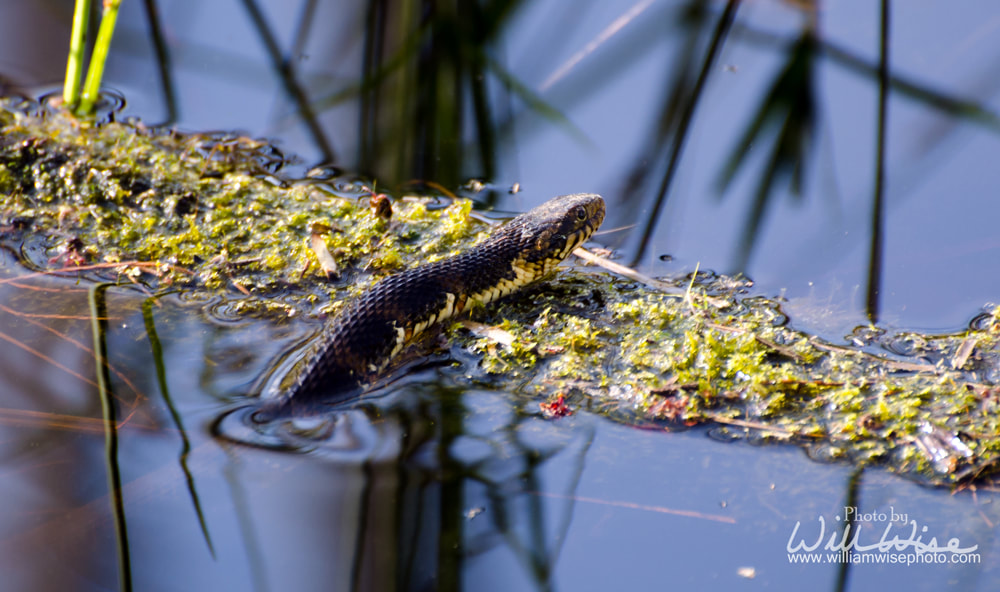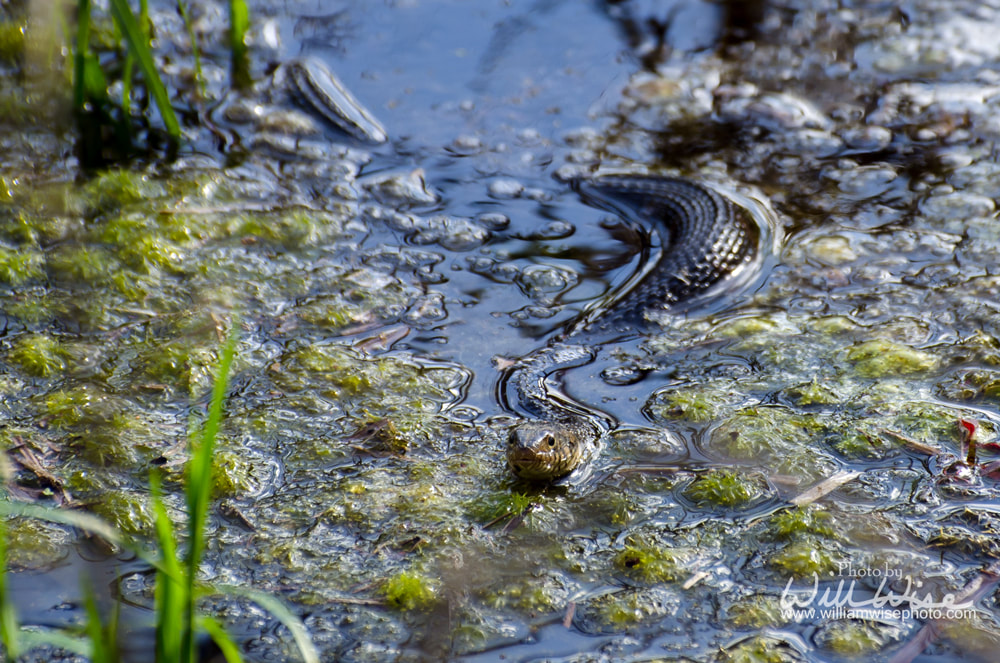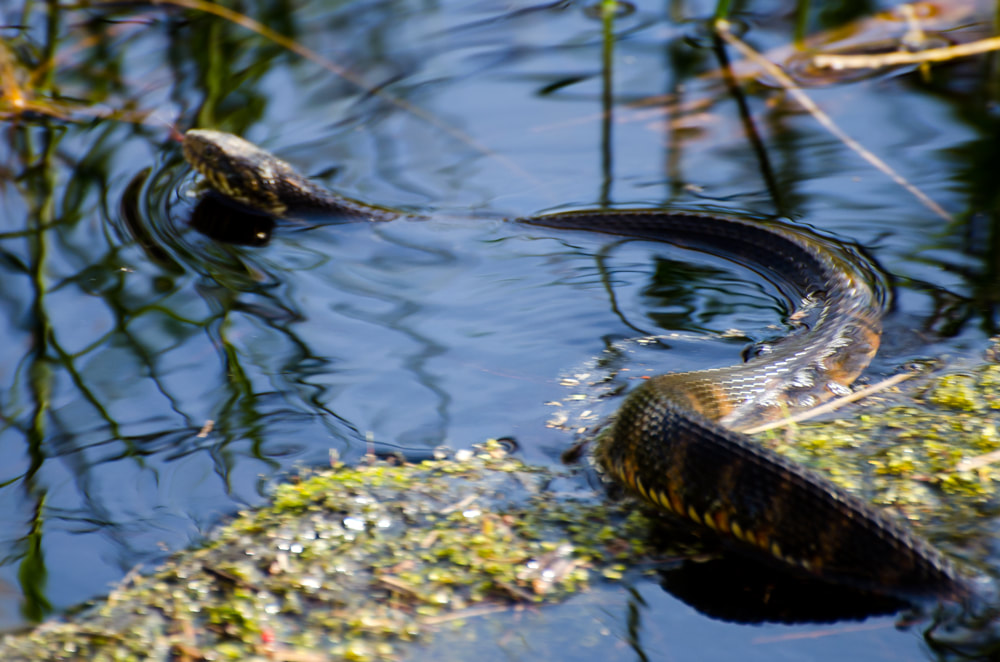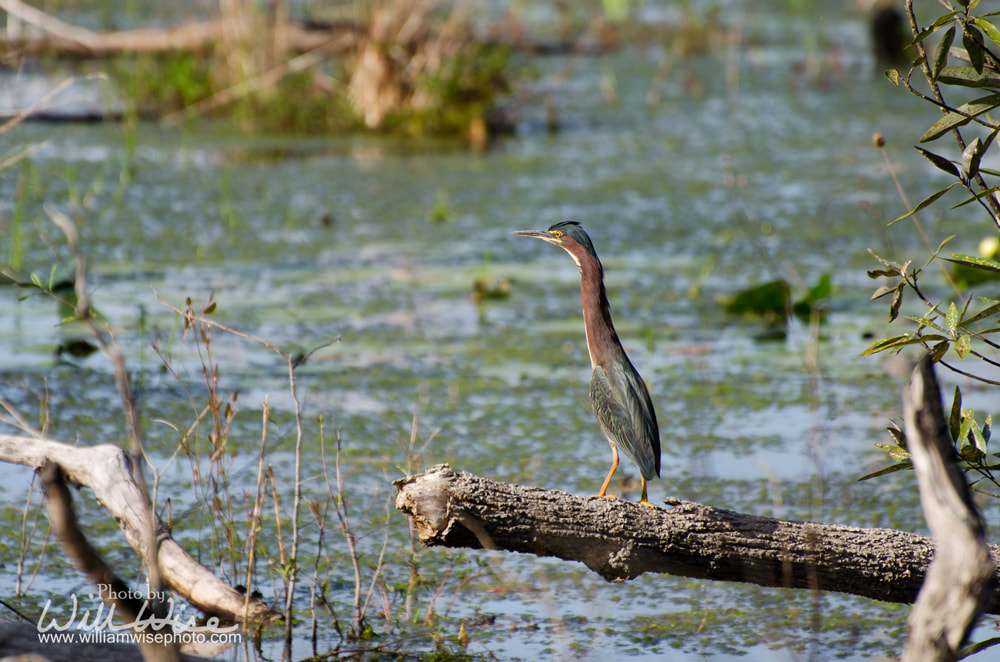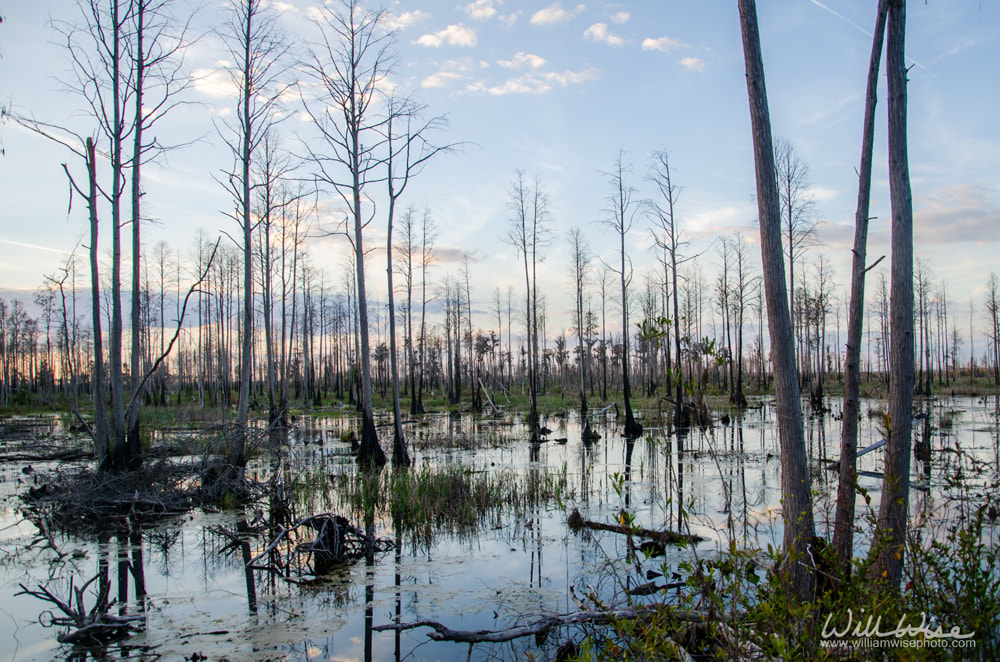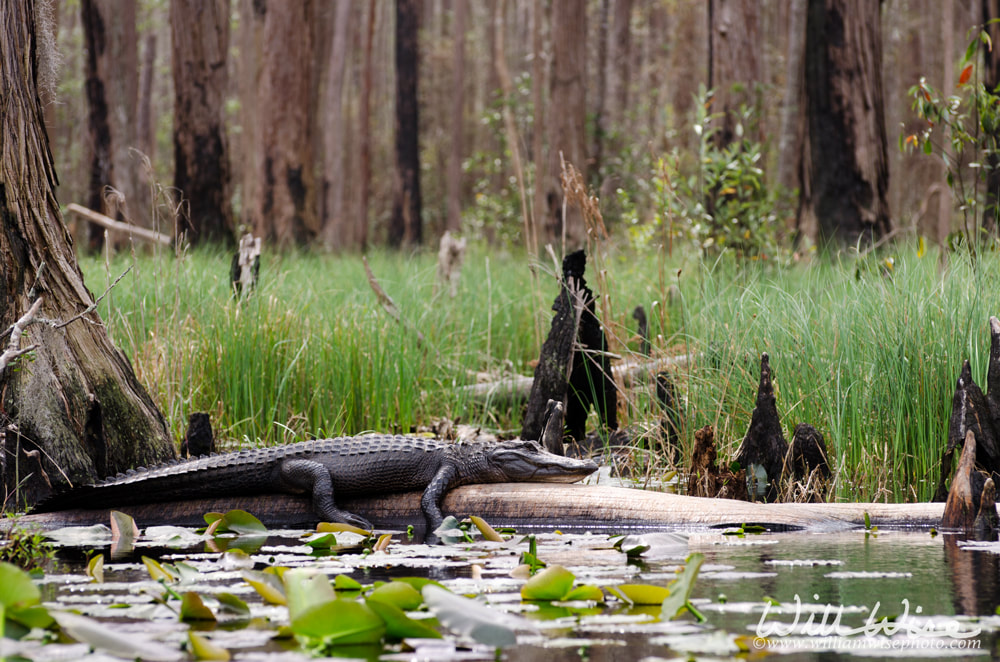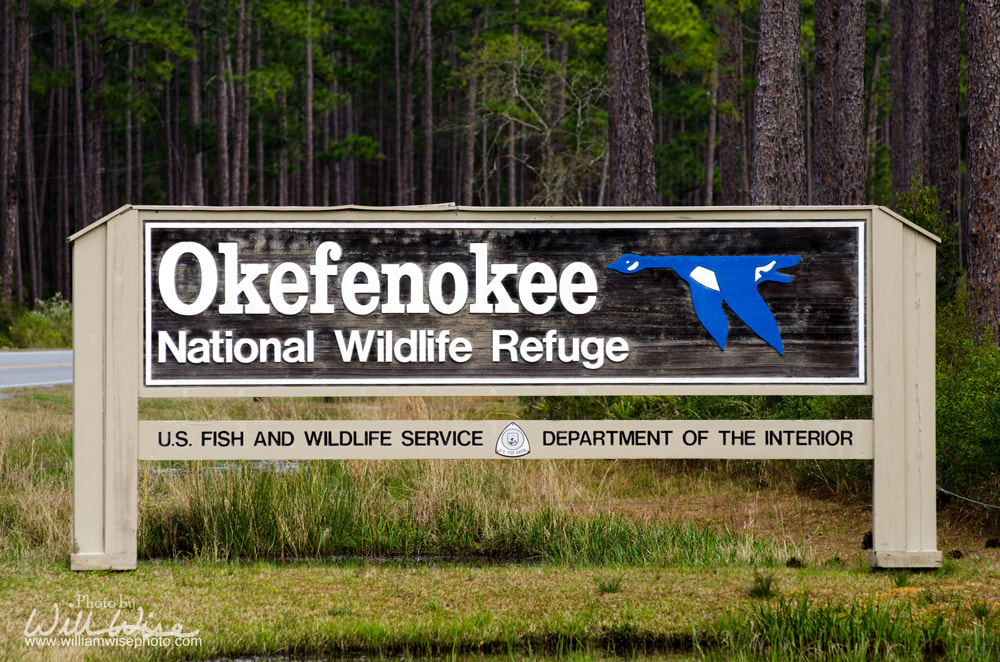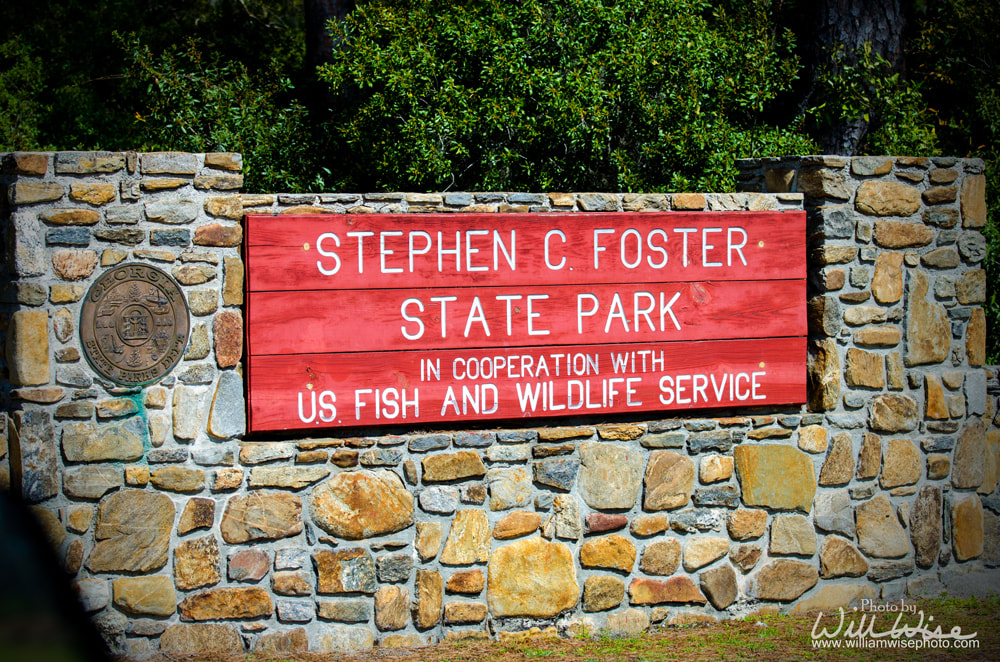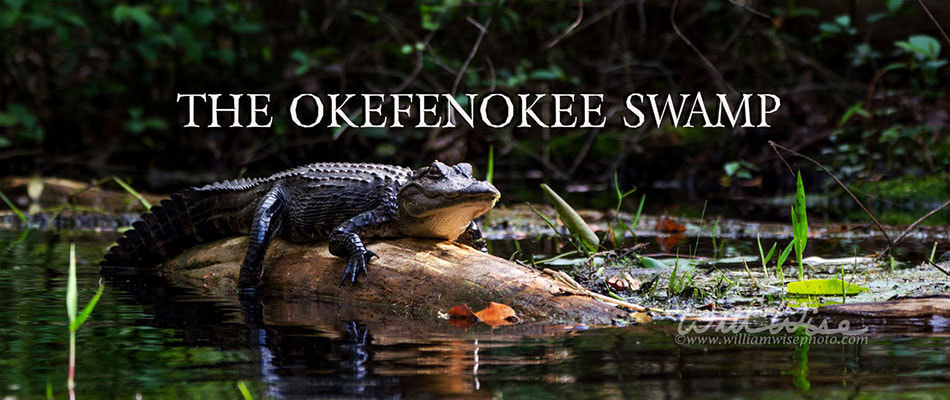 Okefenokee Photography by William Wise. A nature photo journal exploration of Georgia's Okefenokee Swamp, the Land of Trembling Earth, one of the largest blackwater swamps in North America. The alligators, birds, snakes and wildlife of Okefenokee National Wildlife Refuge and Stephen C Foster State Park. -- "What a wildly wonderful world, God! You made it all, with Wisdom at Your side, made earth overflow with your wonderful creations." Psalms 104 The Message Wednesday, 11:37 AM - After our initial guided boat tour of Billy’s Lake, we returned to our campsite for lunch and to load our gear for an afternoon paddling expedition to Billy’s Island. Not knowing the boat rental office would be closed for lunch, we made another stroll of the Trembling Earth Nature Trail boardwalk to pass time. In the early 1990s, when I should have been sitting in my college classes, I was usually out in the rural areas and swamps of Georgia, Florida and the Carolinas flipping pieces of tin and digging through piles of debris hoping to find snakes. Reptiles became a lasting interest, and much of what drew me to the Okefenokee Swamp in first place. Twenty years later I’m back in the Okefenokee with my twelve-year-old daughter. Thankfully she shared her dad’s love of snakes and was hopeful for a reptile find as well! We weren’t disappointed as we quickly came across a Brown Watersnake along the swamp boardwalk in the Stephen C Foster State Park. I’m not sure how we spotted this perfectly camouflaged dark, black and brown snake laying in the dark water choked with brown leaf litter. There are several species of Nerodia found in the Okefenokee. I usually recognize N. taxispilota by the squarish blotches that run in equal spacing down its back, cady-corner with the patches that run alternatingly down each side. Walking further down the swamp boardwalk, my eyes were constantly scanning left and right among the shallow waters and cypress knees. My daughter and I were constantly engaged in a silent competion to spot snakes. I don’t know how, but it seems that Amanda is always the one to find the snakes on our trips. She discovered the beautiful Canebrake Rattlesnake at Cloudland Canyon State Park by nearly putting her foot down upon the serpent stretched across the trail. But not this time! I was going to out-score her in the Okefenokee this year! As we rounded a corner on the trail, Amanda’s eyes were caught by a slow slithering five feet below the boardwalk. “SNAKE!” she shouted! Laying there at the base of a Blackgum tree was a stout Plain-bellied Watersnake. Adult Nerodia erythrogaster typically have unpatterned backs and bright, plain bellies. This beauty was nearly pure red underneath. As our 2015 Okefenokee trip came to an end, Amanda had outscored me on snakes four-to-one nearly the entire time. But on the last evening I found a baby Banded Watersnake by the campground bathroom, bringing my tally to a meager two! It always rubs my “I’m-the-snake-man” ego the wrong way when she outscores me. But I comfort myself by thinking, “She gets it from me.”
0 Comments
 Okefenokee Photography by William Wise. A nature photo journal exploration of Georgia's Okefenokee Swamp, the Land of Trembling Earth, one of the largest blackwater swamps in North America. The alligators, birds, snakes and wildlife of Okefenokee National Wildlife Refuge and Stephen C Foster State Park. -- "What a wildly wonderful world, God! You made it all, with Wisdom at Your side, made earth overflow with your wonderful creations." Psalms 104 The Message Excerpt from the 1926 History of the Okefenokee Swamp by AS McQueen and Hamp Mizell:
 Okefenokee Photography by William Wise. A nature photo journal exploration of Georgia's Okefenokee Swamp, the Land of Trembling Earth, one of the largest blackwater swamps in North America. The alligators, birds, snakes and wildlife of Okefenokee National Wildlife Refuge and Stephen C Foster State Park. -- "What a wildly wonderful world, God! You made it all, with Wisdom at Your side, made earth overflow with your wonderful creations." Psalms 104 The Message "Plume hunting" for sport and fashion was common in the years before laws were enacted to protect our birds. The following is an excerpt from A Florida Sketch-Book by naturalist Bradford Torrey in 1895:
Torrey, Bradford. "Chapter 4: “Along the Hillsborough”." A Florida Sketch-Book. 1895.  Okefenokee Photography by William Wise. A nature photo journal exploration of Georgia's Okefenokee Swamp, the Land of Trembling Earth, one of the largest blackwater swamps in North America. The alligators, birds, snakes and wildlife of Okefenokee National Wildlife Refuge and Stephen C Foster State Park. -- "What a wildly wonderful world, God! You made it all, with Wisdom at Your side, made earth overflow with your wonderful creations." Psalms 104 The Message "It was a 'copper-bellied moccasin,' he declared, whatever that may be, and was worse than a rattlesnake." A humorous story from naturalist Bradford Torrey's 1894 book, A Florida Sketchbook. It would be even more humorous if ignorant snake killing wasn't still common.
 Okefenokee Photography by William Wise. A nature photo journal exploration of Georgia's Okefenokee Swamp, the Land of Trembling Earth, one of the largest blackwater swamps in North America. The alligators, birds, snakes and wildlife of Okefenokee National Wildlife Refuge and Stephen C Foster State Park. -- "What a wildly wonderful world, God! You made it all, with Wisdom at Your side, made earth overflow with your wonderful creations." Psalms 104 The Message Another sixty-one miles of long, flat, boring roads through the pine flat-woods of South Georgia on GA-94. Besides the occasional barns and homesteads, the landscape is devoid of memorable landmarks. If the roads weren’t so perfectly straight, one might feel as if he were going in circles. In his Florida Sketch Book, Bradford Torrey writes…
The pine flat-woods in South Georgia are much different than the pine forests of the Piedmont. The southern pines seem taller and less foliated; they are more mindful of each others’ personal space than their crowded Loblolly cousins in the north. With only patches of Saw Palmetto and Broomsedge, the pines stretch beyond and behind, and on either side; like fields of telephone poles ever receding as one approaches. Other than passing shadows cast by the soaring vultures, there is little shade or retreat from the overhead sun.
We will soon be entering the Okefenokee, the Land of Trembling Earth…  Okefenokee Photography by William Wise. A nature photo journal exploration of Georgia's Okefenokee Swamp, the Land of Trembling Earth, one of the largest blackwater swamps in North America. The alligators, birds, snakes and wildlife of Okefenokee National Wildlife Refuge and Stephen C Foster State Park. -- "What a wildly wonderful world, God! You made it all, with Wisdom at Your side, made earth overflow with your wonderful creations." Psalms 104 The Message Tuesday, 6:35 PM - As the fading light of dusk was about to force us to our tent site, a couple walking up the road said, “There is a gator behind the boat barn. But be careful; he’s out of the water and he is biiiiigggg.” We walked the quarter mile to the end of the cul-de-sac and pretended not to see the “NWR Staff Only Beyond this Point” signs. We looked around the left side of the shed; nothing. As we came around the right… “Whoa! That is a big one!” He was sprawled out on the grass with his feet facing upwards. He must have fallen asleep sunning himself, for the sun had gone down an hour ago. He was turned away from us, so we snuck up close behind him. There was no sign of movement, not even of breathing. In fact, he didn’t even flinch when pelted with a couple of pine cones. Wondering if he was dead, I felt the temptation to grab the end of his tail, but figured that was the kind of thing that gets one in the news. We decided just to head back and check if he would still be there in the morning. As we walked back to camp, we half-jokingly discussed how we’d get a nine foot gator back home to skin and tan. We spent the last two hours safely away from the sting of the mosquitoes in our tent playing battleship, reading, and planning the next two days. The night air cooled well enough for sleeping, and we fell asleep to the hoots of the Barred Owls. I awoke a few times that night; once to repeated rustling and light footsteps in the leaves outside our tent.
 Okefenokee Photography by William Wise. A nature photo journal exploration of Georgia's Okefenokee Swamp, the Land of Trembling Earth, one of the largest blackwater swamps in North America. The alligators, birds, snakes and wildlife of Okefenokee National Wildlife Refuge and Stephen C Foster State Park. -- "What a wildly wonderful world, God! You made it all, with Wisdom at Your side, made earth overflow with your wonderful creations." Psalms 104 The Message "The artist can find in this Swamp scenes for masterpieces – from the beautiful to the somber – for a while there are scenes of unsurpassed beauty, there are others dark, dangerous and foreboding.”
 Okefenokee Photography by William Wise. A nature photo journal exploration of Georgia's Okefenokee Swamp, the Land of Trembling Earth, one of the largest blackwater swamps in North America. The alligators, birds, snakes and wildlife of Okefenokee National Wildlife Refuge and Stephen C Foster State Park. -- "What a wildly wonderful world, God! You made it all, with Wisdom at Your side, made earth overflow with your wonderful creations." Psalms 104 The Message In 1895, naturalist Bradford Torrey wrote of the Green Heron being at home in watery woods such as the Okefenokee Swamp:
Torrey, B. (1895). A Florida Sketch-Book.  Okefenokee Photography by William Wise. A nature photo journal exploration of Georgia's Okefenokee Swamp, the Land of Trembling Earth, one of the largest blackwater swamps in North America. The alligators, birds, snakes and wildlife of Okefenokee National Wildlife Refuge and Stephen C Foster State Park. -- "What a wildly wonderful world, God! You made it all, with Wisdom at Your side, made earth overflow with your wonderful creations." Psalms 104 The Message The old time gator hunters and Swampers used to hunt alligator at night by torch or spotlight. The shiny crystals in the alligator’s eye, called the tapetum lucidem, cause them to shine bright red in the dark night. Once located, a quick shot from the hunter’s rifle aimed between the glowing eyes ends its life. But sometimes the alligator isn’t killed. And what doesn’t kill you makes you wiser! From that point forward, the eye shine of these wise gators quickly blinks out as the hunters’ lanterns approach as the alligator submerges. In his 1935 book, The Alligator’s Life History, E.A McIlhenny writes, “Old alligators are now very shy of man, and as they usually have large underground tunnels in which to hide, they sometimes cannot be gotten either by light or by pole, and an alligator who has been shot at once by the light of a bull's-eye is never again approachable with a light. As soon as an alligator that has been shot at but not killed sees a headlight, it sinks under the water. These alligators are known as ‘blinkers,’ and are entirely shy of night hunters.” E.A. McIlhenny (1872 – 1949), of the McIlhenny Tabasco Sauce company, was a hunter, explorer and naturalist that established the Avery Island wildlife refuge on his family estate in Louisiana and wrote The Alligator's Life History in 1935. While some of his statements are criticized by modern science, he was one of the most knowledgeable alligator experts in the country at the time. His work contains valuable information and entertaining anecdotes.  Okefenokee Photography by William Wise. A nature photo journal exploration of Georgia's Okefenokee Swamp, the Land of Trembling Earth, one of the largest blackwater swamps in North America. The alligators, birds, snakes and wildlife of Okefenokee National Wildlife Refuge and Stephen C Foster State Park. -- "What a wildly wonderful world, God! You made it all, with Wisdom at Your side, made earth overflow with your wonderful creations." Psalms 104 The Message Shining the spotlight from the bow of our john boat, shining specks materialized across the inky black waters within the searching beams of light. Although invisible with the unaided eye, the glowing red eyes revealed dozens upon dozens of alligators in the lake surrounding our boat. By pursuing the glowing eyes, we were there to capture, tag and release as many gators as we could that night. It was on that 1995 trip our ecology professor taught us the details of the tapetum lucidum.
Many animals have a reflective membrane in the eyes called the tapetum lucidum, which aids in night vision. The crystals in this incredibly designed membrane take the low light coming in through the eye and reflect it, thereby multiplying the amount of light passing through the retina. Built in night vision! That same tapetum lucidum is what causes that annoying “red eye” in your indoor flash photographs of family and friends. But while in the Okefenokee, instead of spending post-production time on “red eye reduction," I used it to my advantage. As a gator passed by at dusk, I set my camera for a decent nighttime exposure. And even though it was two far for my flash to fill the scene with light, I used just enough flash to cause intentional “red eye” on the alligator, thus producing an eerie, dragon-like appearance in the photograph.  Okefenokee Photography by William Wise. A nature photo journal exploration of Georgia's Okefenokee Swamp, the Land of Trembling Earth, one of the largest blackwater swamps in North America. The alligators, birds, snakes and wildlife of Okefenokee National Wildlife Refuge and Stephen C Foster State Park. -- "What a wildly wonderful world, God! You made it all, with Wisdom at Your side, made earth overflow with your wonderful creations." Psalms 104 The Message Excerpt from the 1926 book History of the Okefenokee, by Hamp Mizell and AS McQueen:
“Alligator hunting affords excellent sport, and requires considerable courage, for it is no laughing matter to haul a wounded alligator into a boat on a dark night. They can – and do – become nasty customers at times and are capable of inflicting serious wounds, either with their long teeth or with their tails. A large alligator can very nearly kill a man with a vicious swipe of the tail.”  Okefenokee Photography by William Wise. A nature photo journal exploration of Georgia's Okefenokee Swamp, the Land of Trembling Earth, one of the largest blackwater swamps in North America. The alligators, birds, snakes and wildlife of Okefenokee National Wildlife Refuge and Stephen C Foster State Park. -- "What a wildly wonderful world, God! You made it all, with Wisdom at Your side, made earth overflow with your wonderful creations." Psalms 104 The Message The most noticeable, or, I should say, most unavoidable sight on the Trembling Earth Nature Trail was the gnats; great clouds of gnats six feet in diameter, swarming at eye-level on the boardwalk. We pass through one cloud - swatting and waving our hands with eyes squinted and mouth shut tight - only to encounter another gnat cloud a few feet further down the boardwalk. Swatting did absolutely nothing; like trying to blow a path through thick fog with your mouth.
With my eyes squinted and facing down, I happen to notice a quick movement below the boardwalk and a stirring of the tannin-stained blackwater swamp. “A snake!” my daughter shouts. She is somehow always the first to spot the serpents on our wildness hikes. Sure enough, down in the sphagnum moss slithered a Southern Banded Watersnake, Nerodia fasciata. One cool reptile was now off our checklist. But where were the alligators?  Okefenokee Photography by William Wise. A nature photo journal exploration of Georgia's Okefenokee Swamp, the Land of Trembling Earth, one of the largest blackwater swamps in North America. The alligators, birds, snakes and wildlife of Okefenokee National Wildlife Refuge and Stephen C Foster State Park. -- "What a wildly wonderful world, God! You made it all, with Wisdom at Your side, made earth overflow with your wonderful creations." Psalms 104 The Message As with most wildlife photography, success can be hit-or-miss. After many forays into the Okefenokee National Wildlife Refuge, a 400,000+ acre swamp located in south Georgia, there are days I fill SD cards to capacity, and days where I wish there was more to see than empty branches on tall trees. But never “write off” a particular area. Just because no wildlife was seen during one visit, doesn’t mean you won’t be surprised on another.
I have walked the short boardwalk within the Okefenokee’s Stephen C Foster campground dozens upon dozens of times. I can walk the distance to the dead end and find nothing. But upon turning around just a few minutes later find a colorful Green Heron that had been skulking down in some scrub on my first pass, only to be flushed out for a photography by the returning sound of my footsteps. Take it slowly on your hikes and paddles. Even if you don’t photography many animals, landscape opportunities abound. Take in the sun and fresh air; feel the texture of the cypress bark and leaves; breathe in the aromas of wildflowers; search the shadows for fiddleheads and mushrooms. Never be reluctant to make a second trip. You may see something now, when before you didn’t!  Okefenokee Photography by William Wise. A nature photo journal exploration of Georgia's Okefenokee Swamp, the Land of Trembling Earth, one of the largest blackwater swamps in North America. The alligators, birds, snakes and wildlife of Okefenokee National Wildlife Refuge and Stephen C Foster State Park. -- "What a wildly wonderful world, God! You made it all, with Wisdom at Your side, made earth overflow with your wonderful creations." Psalms 104 The Message An excerpt from Francis Harper's 1913 paper "A Biological Reconnaissance of the Okefinokee Swamp", published in The Auk, the official publication of the American Ornithological Society:
 Okefenokee Photography by William Wise. A nature photo journal exploration of Georgia's Okefenokee Swamp, the Land of Trembling Earth, one of the largest blackwater swamps in North America. The alligators, birds, snakes and wildlife of Okefenokee National Wildlife Refuge and Stephen C Foster State Park. -- "What a wildly wonderful world, God! You made it all, with Wisdom at Your side, made earth overflow with your wonderful creations." Psalms 104 The Message After miles of seemingly endless, boring driving through pine flat-woods, one hopes for a sign from heaven that the swamp is nearing. And that first “sign” is literally a large, wooden sign marking the entrance to the refuge! The Okefenokee National Wildlife Refuge was established in 1937 as a “refuge and breeding ground for migratory birds and other wildlife”. The Swamp survived an attempt at draining in the late 1800’s and was logged extensively in the early 1900’s before becoming a refuge in 1937 by declaration of Franklin D. Roosevelt. It encompasses 401,880 acres (628 square miles), roughly 35 miles north to south and 25 miles east to west.
|
Categories
All
Archives
September 2025
|
|
All content is ©williamwisephoto.com. Please don't steal images. My images are available at dreamstime.com. Stock sales go into the shelter photography program.
|
In December 1993 I came to know the Designer and Creator of this wonderful planet and its creatures: Jesus Christ.
|
Donations help support the animal shelter adoption photography equipment and adoption website hosting and domain fees. Thanks for your support!
|
